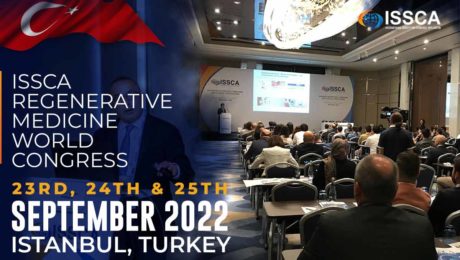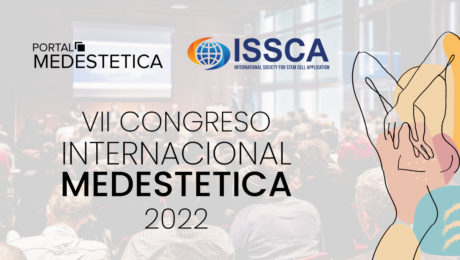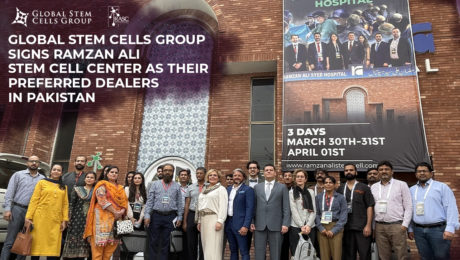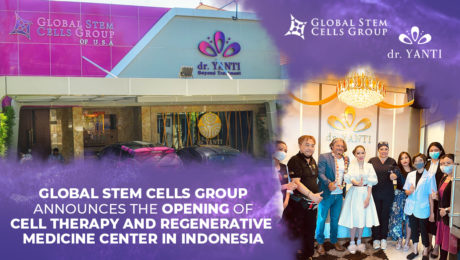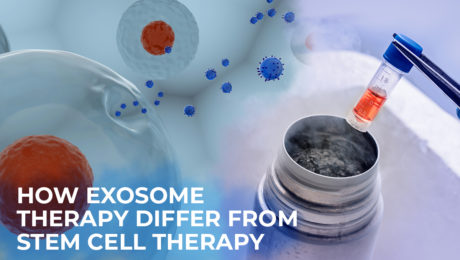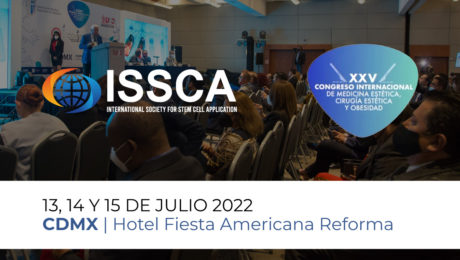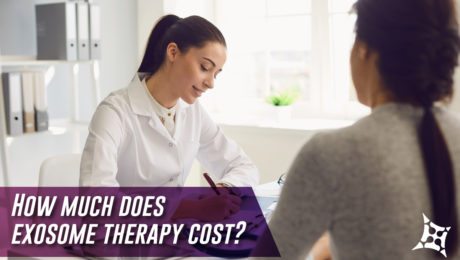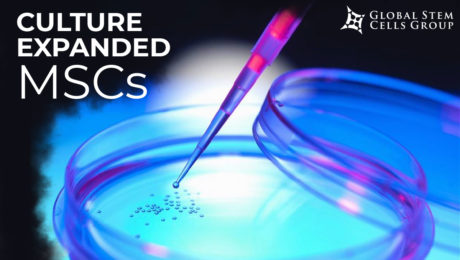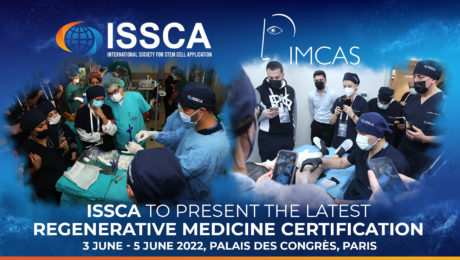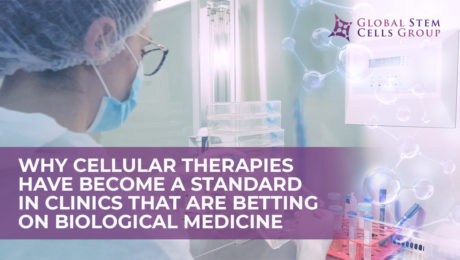ISSCA Announces the Program Agenda of Regenerative Medicine World Congress 2022
The International Society for Stem Cell Application (ISSCA) is hosting the most anticipated regenerative medicine event of he year – Regenerative Medicine World Congress 2022. The congress will take place at the Radisson Blu Hotel Istanbul Sisli, Turkey, on September 23. 24. and 25.
The congress features theoretical lectures on the first two days. Physicians and scientists from around the world will present evidence-based research: demonstrate updates on technologies. products, and equipment: share their extensive experience in clinical applications of regenerative medicine and cellular therapies. 30 presentations focusing on stem cell research and regenerative medicine will be given by clinicians and researchers in different specialties. Featured topics include:
- Mesenchymal stem cells (MSC)
- Exosomes
- Plastic and reconstructive surgery
- Clinical trials
- Nerve injury treatment
- Applications in ophthalmology and cardiology
- Immunotherapy
The congress will be the ultimate gathering and a showcase of the most cutting-edge research in regenerative medicine. Congress participants will be able to network with like-minded medical professionals from different parts of the world and become part of a growing community leading the future of medicine.
With the All-Access package, congress participants will have access to the hands-on practice certification portion on the third day. The live practical portion has only 20 limited seats available.
ISSCA-certified instructors, Dr. Maritza Novas (Director of Research and Development at Global Stem Cells Group. USA) and Dr. Melihcan Sezgic (Plastic. Reconstructive and Aesthetic Surgeon. Regenerative Medicine Specialist. Turkey), will lead one-on-one training sessions at the ReGeniC Clinic. This is a great opportunity to gain intensive hands-on experience in the aesthetic and clinical applications of stem cell therapy. The following training modules are included:
Cellular Products
- Mononuclear layer umbilical cord blood
- Exosomes: Characterization, examination of growth factors and cytokines
- Amniotic fluid and its action as a natural anti-inflammatory
Production, Manufacturing, and Quality Control
- Eligibility and selection of donors
- Collection and management of samples
- Processing and laboratory standards
- Testing and validation of quality control
Protocol Discussion
- Clinical framework for therapeutic applications
- Protocol details and supporting scientific literature
- Product storage and preparation
- Selection of patients
- Results and expectations of patients
Application of the Protocol in Live Patients
- Demonstration of product preparation and injection
About ISSCA
The ISSCA is a multidisciplinary community of physicians and scientists with a mission to advance the science, technology, and practice of Regenerative Medicine to treat disease and lessen human suffering. Its members are leaders in setting standards and promoting excellence in regenerative medicine, related education, certification, research and publications.
The Regenerative Medicine World Congress 2022 will be one of the most celebrated events of the year. where we share the ISSCA values in Integrity, Interdisciplinary, and Innovation. The ISSCA invites physicians and healthcare professionals devoted to regenerative medicine to expand their network, access world-class speakers, and update themselves with the latest technologies, products and equipment.
For more information. please fill out the form to contact us.
- Published in Press Releases
ISSCA WILL PARTICIPATE IN VII CONGRESO INTERNACIONAL MEDESTETICA 2022: ARGENTINA
The international society for stem cell association (ISSCA) will participate in VII CONGRESO INTERNACIONAL MEDESTETICA 2022 at Paseo La Plaza. Buenos Aires, Argentina, on August 11, 12 and 13.
ISSCA has announced plans to participate as a sponsor in the medestetica congress. The organization has been promoting advances in regenerative medicine especially focused on the aesthetic field and will continue to explore new medical events like CONGRESO MEDESTETICA to educate the Argentine medical community
As part of the program ISSCA faculty members will have a presentation and a practical workshop showing the latest application of regenerative medicine. ISSCA complete program will cover all the different topics related to regenerative medicine applications, guidelines and clinical protocols
About the Speakers
Dr. Maritza Novas
Dr. Maritza is a research and Development Director of Global Stem Cells Group in the USA. She is a pioneer in using cell therapies for therapeutic procedures. pain management. and aesthetic applications. She has an outstanding reputation for training over 2000 physicians globally on procedures and protocols for harvesting and isolating adipose-derived stem cells for autologous and allogeneic reim plantation. She will be covering the topic of Allogeneic Therapies and stromal cell exosomes.
Dr. Silvina Pastrana
She is a chapter director of ISSCA in Argentina and medical director of the stem cell center in Buenos Aires. Dr. Silvina is a Regentherapy s.a. medical surgeon. She has a master’s in aesthetic and anti-age medicine (AMA). an Ozonologist. and a master’s in pain management. Her topic in this congress will be Fundamentals of cellular therapies: mesenchymal cells.
Dr. Andrea Lapeire
She is an aesthetic medical practitioner with a postgraduate in obesity. biological medicine. homotoxicology. and environment. Her workshop demonstration will be on advanced regenerative medicine in alopecia and its basics.
Prof. Dr. Julio Ferreira
He is from Argentina is a professional cosmetic surgery and aesthetic medicine expert. He is a university professor of medicine and is the president of the South American Academy Of Aesthetic Surgery. He will cover regenerative therapies in rejuvenation and facial harmonization in the workshop.
Benito Novas
Benito Novas is the managing director of the International Society for Stem Cell Application from the USA. He is the senior marketing consultant and founder of “Este’tica marketing INC”. as an Author. he has authored several books among them: su clinica este’tica. Lo que dicen sus pacientes” Marketing Digital en su Clinica Estetica” and “Marketing en Tiempos de Crisis” for more information on Novas you can check on www.benitonovas.com. In this congress. Benito Novas will be covering Digital Marketing in Cash-based practices.
ISSCA at Global Perspective.
ISSCA has been at the forefront of promoting excellent and standardized regenerative medicine. For more information and updates. visit us at https://www.issca.us/
The ISSCA is a multidisciplinary community of physicians and scientists with a mission to advance the science, technology, and practice of Regenerative Medicine to treat disease and lessen human suffering. Its members are leaders in setting standards and promoting excellence in regenerative medicine, related education, certification, research and publications.
- Published in Press Releases
Global Stem Cells Group Signs Ramzan Ali Stem Cell Center as Their Preferred Dealers in Pakistan
Global Stem Cells Group has announced the signing of an exclusive contract with Ramzan Ali Stem Cell Center to expand the company’s service for Patients, doctors and product lines in Pakistan
GSCG and Ramzan Ali Stem Cell Center have signed an exclusivity agreement for 5 years to enhance GSCG’s services in Pakistan that entails multiple locations for patient treatment, 4 annual training dates for doctors and an annual congress to raise awareness of the benefits of cellular medicine in the country, as well as access to entire global stem cells group line of cellular products.
The GSCG and Ramzan Ali Stem cell center alliance aims to introduce state-of-the-art medical technology. It’s a merger that will cover medical training in 5 cities in the country that will provide essential treatment. The contract covers the launch of the cellular products that Global manufactures and distributes. It includes the Cellgenic line of Exosomes in lyophilized and liquid versions.
This partnership seeks to expand the brand and create centers of excellence in cell therapy to meet the demand in the Asian and Middle Eastern markets. Global Stem Cells Group is rapidly expanding its operations globally as it seeks to dominate the lucrative health industry of regenerative medicine. The organization is merging with healthcare providers majoring in regenerative medicine with at least five years of experience in the healthcare sector to achieve its expansion plans.
Ramzan Ali Stem Cell Center is an exclusive regenerative medicine service provider that treats chronic conditions. degenerative diseases. and injuries via stern cell therapy in Pakistan. The organization has a team of highly trained specialists of licensed medical doctors, and post-graduate physicians. and surgeons.
According to Benito Novas. the Managing Director of Global Stem Cells Group. the partnership aligns with the company’s long-term goals and expansion plan. “Our top objective is to make the benefits of regenerative medicine a reality for doctors and patients worldwide. The business continues to grow and position itself as a market leader.” He adds.
This new merger will incorporate state-of-the-art stem cell practices and procedures. These measures will ensure that patients access efficient and affordable options when seeking reliable solutions.
Prof. Dr. Mahmood Shaukat, Head of Ramzan Ali Stem Cell Centre welcomed the alliance. He said his organization is proud to be part of the GSCG growing family. It’s a collaboration that will see them access stem cell equipment, physician training. certification, and Stem Cell Training from a group with a remarkable history and great international renown.
According to Mr. Syed Asad Ali Ashraf, Managing Partner of Ramzan Ali Syed Hospital, the union aims to dominate the Asian and Middle East markets. “We want to bring all GSCG’s business lines to Pakistan by adopting stem cell training, certification, products, production, patient care, and equipment:’ He adds. It’s an alliance that will enable the institution to expand to five cities in Pakistan. The move will ensure state-of-the-art and affordable regenerative medical care in the country.
Global Stem Cells Group has taken the lead in the health sector with the current advancement in technological sciences. It’s a merger that aims to deliver the latest regenerative medicine majoring in biotechnology, stem cell, and genome to the health care industry in Pakistan.
- Published in Press Releases
Global Stem Cells Group announces the opening of cell therapy and regenerative medicine center in Indonesia
Global Stem Cells Group is pleased to announce the establishment of a cell therapy and regenerative medicine facility in Indonesia. The new facility emphasizes Global Stem Cell Group’s objectives of bringing the advances and benefits of regenerative medicine to parts of the world where they are less well known.
By enabling cooperation with Dr. Yanti Kusmiran Clinic in Indonesia , this new center will promote high standards of service in Regenerative medicine across Indonesia.
The vision
This center is part of an expanding medical network of partners, and it will formalize and strengthen ties, establishing a global center of excellence to guarantee that we effectively use the underlying basic stem cell technology for medical conditions where traditional therapeutic approaches seem to have failed . This is consistent with the GSCG’s overall strategy for developing regenerative medicine through data-driven studies, disease modeling, and cell-based therapeutics.
There wouldn’t have been a better partner to go sign this deal with, Dr. Yanti Aesthetic Clinic provides the organizational and physical infrastructure needed to disseminate need-based stem cell and gene therapies locally. And Global Stem Cells Group’s outstanding cell and stem cell biology and disease pathophysiology give an edge to any patient they’re prescribed to.
GSCG has developed an enviable reputation in regenerative medicine. So, this presents the perfect opportunity to translate breakthrough therapies from basic discoveries to useful products drawing on the skills and local knowledge of Dr. Yanti Aesthetic Clinics.
Group managing director Benito Novas provided the clearest description of the new strategic direction and GSCG’s objectives. “Our main goal is to make regenerative medicine benefits a reality for both doctors and patients all around the world. The company is expanding and establishing itself as a market leader.”
The current market outlook
Cell therapies are becoming an increasingly effective and safe clinical solution to treat conditions that traditional medicine offers only palliative care. That is why patients all over the world are looking for a natural regenerative alternative without the use of drugs and medicines. . However, its application is still in its early stages. Moves like this one try to reduce the impediments to widespread adoption. This effort will play a significant role in the development of regenerative medicine in Indonesia , allowing for continuous improvement through research and development.
Dr. Yanti Aesthetic Clinics
Dr. Yanti Aesthetic Clinics is a premier cosmetic and aesthetics clinic in Kelapa Gading, Jakarta Utara. Since its inception in 2004 in Surabaya by Dr. Khoe Yanti Khusmiran, the hospital has expanded to over 6 branches throughout Indonesia. They provide a range of skin and body enhancement treatments and stand to gain from stem cell therapies for their minimally invasive and non-invasive procedures.
The newly formed association will deliver revolutionary medicines through these clinics to assist patients in avoiding permanent harm and live healthy lives. Changing the paradigm from asymptomatic treatments to cures that improve quality of life. Dr. Yanti Kushmiran was enthusiastic about this announcement. He said, “We are honored to be a part of GSCG, which has an over 10-year track record in the market and a strong international reputation. We will provide more services to our patients because of this new partnership.”
GSCG delivers leadership in regenerative medicine research, patient applications, and training through our strategic global networks. We endeavor to enable physicians to treat otherwise incurable diseases using stem cell therapy and to improve the quality of life and care across the world.
For this reason, we work with innovative next-generation therapy providers like Dr. Yanti Aesthetic Clinics to give access to one-of-a-kind holistic, and safe, treatment options.
More information regarding this transaction and the Global Stem Cells Group may be found at GSCG.
Global Stem Cells Group is a publicly traded company operating under the symbol MSSV. https://finance.yahoo.com/quote/mssv/
- Published in Press Releases
How Exosome Therapy Differ from Stem Cell Therapy
Exosomes are potent microvesicles released by adult mesenchymal stem cells. They have the ability to help restore cells in the body by improving cell to cell communication.
Exosomes are not cells, and they are smaller than cells. When compared to adult stem cells, exosomes have much more growth factors which give them a better clinical and aesthetic potential than stem cells.
It’s a cell-free cell therapy, this makes it safer compared to other cellular therapy, because there’s no risk of rejection in graft Vs host.
Unlike some other cellular therapies, exosomes do not produce host graft reactions, because they do not carry HLA genetic information and are not cells but extracts of the cells (released by cells).
Exosomes have a superior regenerative capacity, because they are obtained from newborn umbilical cord tissue mesenchymal cells, which means they have not been exposed to any contaminating or toxic agent because our cells are as healthy as our body.
Exosomes improve the signaling between cells, thereby making them useful to revitalize, rejuvenate, restore, and cause anti-inflammatory effects in the body.
When compared to autologous adult stem cells, exosomes have much more healthy growth factors which gives them a better clinical and aesthetic potential than stem cells.
Exosomes are less complicated products to transport because the cells used in cellular therapy must be applied to the patient very quickly because they are live cells. In the laboratory, once they are thawed the doctors have limited time to apply them. However, with exosomes, they last longer, because as they are proteins they do not denature and can last for longer periods.
Exosomes is a superior product to autologous treatments because they do not require a surgical procedure, they come in a vial that can be injected directly, significantly reducing the risk and complications of a surgical procedure.
It is a superior product to autologous stem cell therapy because the patient’s cells have the same age and the same quality. For example, if a patient is a smoker and intoxicated, obviously the health of his cells is not the best. That is why the most indicated product is a donor product that is pure and free of toxins.
Mesenchymal cell-derived exosomes are preferably used in regenerative medicine. These cells are excellent regenerative cells due to their multipotent nature, therefore MSCs derived exosomes are superior to other exosomes products.
The Cellgenic lyophilized exosomes are derived from mesenchymal cells, which makes it superior to other exosome products, because mesenchymal cells have superior and excellent regenerative capacity.
This is why exosome therapy, especially Cellgenic lyophilized exosomes should be a doctor’s first choice.
- Published in Corporate News / Blog
ISSCA Members to Present in the XXV Congreso Internacional de Medicina, Cirugia Estética y Obesidad
The XXV Congreso Internacional de Medicina, Cirugia Estética y Obesidad will take place in CDMX, México on July 13,14 and 15, 2022. The International Society for Stem Cell Application (ISSCA) will be actively taking part in the congress. The ISSCA is a multidisciplinary community of physicians and scientists with a mission to advance the science, technology, and practice of regenerative medicine to treat diseases and lessen human suffering through science, technology, and regenerative medicine. Several ISSCA members will be presenting or giving demonstrations on the latest protocols and technologies in regenerative medicine.
- Benito Novas, the managing director of the ISSCA from the USA, will give a talk about Digital Marketing in Cash-Based Practices. Benito Novas is a global entrepreneur, manager, and keynote speaker, who specializes in marketing focused on biotechnology, life sciences, and healthcare development. He has served as the director of the ISSCA since 2016. His published books in Aesthetic Practice and Digital Marketing can be found here. In his presentation this July, he will share his visionary approach to healthcare management and regenerative medicine. Congress attendees will have the opportunity to learn why doctors must use digital marketing strategies to grow a successful practice. Benito Novas will provide tips to attendees on how to capitalize on social media trends to grow practice influence.
- Dr. Maritza Novas, the ISSCA director of education from the USA, will talk about Allogeneic Therapies and Stromal Cell Exosomes. The use of allogeneic therapy is one of the most attractive alternatives to autologous products and is of utmost interest to researchers in recent years. Exosomes serve as mediators for cell-to-cell communication and can be used as cell-free therapeutics for their special characteristics. Dr. Maritza Novas has been in aesthetic and anti-aging medicine since 2001. She is globally recognized for her work in regenerative medicine and dedicated service in education.
- Dr. Silvina Pastrana, the Argentina chapter director of the ISSCA from Argentina, will present on Fundamentals of Cellular Therapies and Mesenchymal Stem Cells (MSC). Dr. Pastrana heads a staff of medical specialists in orthopedics, rheumatology, medical clinic, and cosmetic surgery, performing procedures that incorporate stem cell therapies. She has been serving as a staff surgeon for the Hospital Dr. Prof. Luis Güemes for 21 years.
Besides the above presentations, look forward to sessions in the practical portion of the congress, where the following ISSCA members will show the latest protocols and technologies in regenerative medicine:
- Dr. Julio Ferreira (Argentina), Cosmetic Surgery / Aesthetic Medicine
- Dr. Andrea Lapeire (Argentina), Aesthetic Medicine
- Dr. Maritza Novas (USA), ISSCA Director of Education in the USA
- Dr. Silvina Pastrana (Argentina), Chapter Director of ISSCA in Argentina
The ISSCA members are the leaders in setting standards and promoting excellence in the field of regenerative medicine, related education, certification, research, and publications. The Global Stem Cells Groups (GSCG) is a group of companies, including the ISSCA and other members, dedicated to facilitating stem cell research and medicine. Making the benefits of stem cell medicine a reality for both doctors and patients worldwide is the goal of the GSCG. To learn more, visit our sites at the ISSCA and the GSCG.
- Published in Press Releases
How much does exosome therapy cost?
Exosome therapy is the new buzz in the regenerative medicine industry because of how it can repair and regenerate your cells and tissues.
Exosome therapy is safer compared to other cellular therapy because it’s a cell-free therapy with no risk of rejection.
Exosome therapy will be beneficial to you if you’re dealing with conditions such as sports injuries, tissue regeneration, hair loss, erectile dysfunction, chronic pain, and many other applications.
In this article, you’ll learn about the cost of exosome therapy and how you can benefit from it.
How the Cost of Exosome Therapy is Determined
All cells produce exosomes, which are microvesicles that contain biochemical and genetic information.
The cost of an exosome product (used in exosome therapy) will depend on the type of cell line (raw tissue source) used to extract the exosomes.
The first factor to determine the cost of an exosome product is the quality of the tissue source.
The most commonly used tissue types are cord blood, amniotic fluid, and mesenchymal cell cultures.
Exosomes derived from mesenchymal cell cultures are the most difficult to obtain but offer the greatest therapeutic potential.
How Much Does Exosome Therapy Cost?
The average cost of exosome therapy is $4,900, but the price can range from $3,500 to $6,500.
It’s also important to note that the price depends on your specific needs and your treatment plan, as decided by the doctor.
The doctor will schedule a consultation with you to determine your personalized treatment plan.
The exosome therapy can either be given as an IV infusion or as localized injections, depending on the purpose of the therapy.
Exosomes are very useful to revitalize, rejuvenate, restore, and reduce inflammations in the body.
Benefits of Exosome Therapy
Hair Loss Therapy
If you’re in the early stages of hair loss, exosome therapy can help regenerate your hair whether you’re a man or woman. After exosome therapy, you’ll start seeing new hair growth in as little as two to three months, with significant results showing six months to one year later.
Chronic Pain
If you’re experiencing chronic pain due to degenerative conditions such as arthritis, exosomes can help subdue the pain by regenerating the cells and helping the body work better.
Degenerative Conditions
For degenerative medical conditions such as osteoarthritis and musculoskeletal injuries, exosome therapy can help your body repair the damage done to your cells, prevent further deterioration, and help you feel better.
Skin Therapy
Exosome therapy can reduce inflammation in the skin by improving its strength and elasticity.
Anti-Aging
If you would like to retain your youthful glow, exosome therapy can make you feel young again by rejuvenating your skin and reversing the aging process in your cells.
Where Can You Get Exosome Therapy?
Cellular Hope Institutes provide exosome therapy for patients looking for better outcomes for various conditions.
The exosomes used at Cellular Hope Institute are obtained from umbilical cord tissue discarded after birth, which means these exosomes have not been exposed to any contaminants or toxic agents, ensuring a higher capacity to regenerate your cells and tissues.
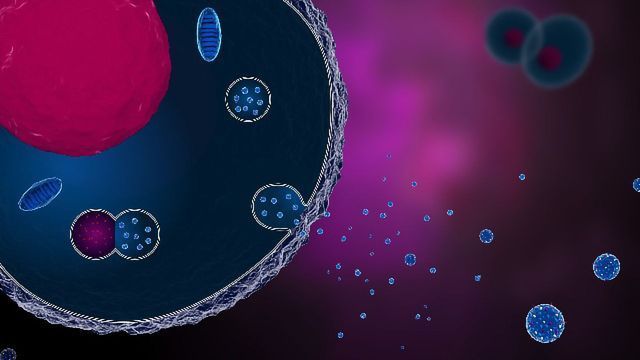
- Published in Corporate News / Blog
Culture Expanded MSCs
Mesenchymal Stem Cells (MSCs) are the most commonly used cells in stem cell therapy and regenerative medicine due to their high multi-potency. MSCs can be isolated from different tissues in the body.
In this article, you’ll learn about culture-expanded MSCs, how MSCs can be expanded, the potency of MSCs, and the types of cells they can differentiate into.
What Are Culture Expanded Mesenchymal Stem Cells?
Mesenchymal stem cells are highly potent cells used for cellular therapy and are isolated from different parts of the body. MSCs can be used to improve patient outcomes in diseases and conditions such as autoimmune diseases, degenerative diseases, nerve damage, diabetes mellitus, bone problems, etc.
For every patient, millions of MSCs are needed, and the exact amount varies according to disease, route of administration, administration frequency, weight, and age of the patient.
MSCs are expanded in a culture medium on a large scale to obtain the required quantity of cells needed for cellular therapy.
Culture Expanded MSCs: How Does It Work?
Expanding MSCs in a medium involves a step-by-step process of isolation and expansion.
Mesenchymal Stem Cells Isolation
MSCs can be isolated from different tissues in the human body such as adipose tissues, dental pulp, human bone marrow, umbilical cord tissue, umbilical cord blood, peripheral blood, and synovium.
MSCs are expanded in culture to increase their yield and amplify their desired functions and potency.
Although the population of MSCs obtained will vary from donor to donor, here are some steps to follow:
- Acquire fresh tissue extracts in strictly aseptic conditions to maintain purity.
- To remove any cell clusters, filter the cell suspension with a 70-mm filter mesh.
- Use a centrifuge to roll the cells for about 5 minutes at 500g.
- Suspend the cells again to measure the cell viability and yield using Trypan blue exclusion.
- Use T75 culture dishes to culture the cells in 10 mL of complete MSC medium at a density of 25 × 10^6 cells/mL. Incubate the plates at 37°C with 5% CO2 in a humidified chamber without any interruption.
- After 3 hours, remove the non-adherent cells by changing the medium and replacing it with 10 mL of fresh complete medium.
- After an additional 8 hours of culture, add 10 mL of fresh complete medium as a replacement for the existing medium. Repeat this step every 8 hours for up to 72 hours of initial culture.
- Cells can be frozen in MSC growth media plus 10% DMSO (D2650) at a density of 2X10^6 cells/vial.
Expansion of Mesenchymal Stem Cells in a Culture Medium
Culture-expanded MSCs undergo various stages from the preparation of the culture plate, thawing of MSCs, and the actual expansion of MSCs.
The reason behind the cultural expansion of MSCs is to get them to differentiate into other cell types such as osteoblasts, adipocytes, and mesenchymal stromal cells.
Preparation
To expand MSCs in a culture medium, you need culture ware. You can get one plastic or glassware plate and coat it with a sufficient amount of 0.1% gelatin. Don’t forget to aspirate the gelatin solution from the coated plate or flask before you use it.
Thawing of Mesenchymal Stem Cells
- After the recommended culture medium and coated culture ware is ready and on standby, remove the vial of MSCs from liquid nitrogen and incubate in a 37°C water bath until all the cells are completely thawed. The extent of completely thawed frozen cells and how fast they thaw determines cell viability.
- Once the cells have thawed completely, disinfect the walls with 70% ethanol before proceeding to the next step.
- Place the cells in a hood, and carefully transfer the cells to a sterile tube with a pipette (1 or 2 mL pipette), doing this to prevent bubbles.
- Add drops of MSC expansion medium that have been pre-warmed to 37°C to the tube containing the MSCs.
- Mix the suspension slowly by pipetting up and down two times while avoiding any bubbles.
- Place the tube in a centrifuge and centrifuge the tube at 300 x g for 2-3 minutes to roll the cells, avoiding vortexing the cells.
- Decant as much of the supernatant as possible to remove residual cryopreservative (DMSO).
- Suspend the cells in a total volume of 10 mL of MSC Expansion Medium again or any alternative of choice, pre-warmed to 37°C, containing freshly added 8 ng/mL FGF-2 (F0291).
- Place the cell suspension onto a 10-cm tissue culture plate or a T75 tissue culture flask.
- Maintain the cells in a humidified incubator at 37°C with 5% CO2.
- The next day, exchange the medium with fresh MSC Expansion Medium (pre-warmed to 37°C) containing 8 ng/mL FGF-2. Replace with fresh medium containing FGF-2 every two to three days thereafter.
- Isolate the cells when they are approximately 80% confluent, using Trypsin-EDTA, and passaged further or frozen for later use.
Functions of Culture Expanded MSCs
MSCs are required to be expanded in order for them to be used clinically for therapeutic purposes.
Culture-expanded MSCs can be induced to differentiate into adipocytes, osteocytes, hepatocytes, chondrocytes, tenocytes, and cardiomyocytes.
Due to their potential to differentiate into different kinds of cells in the body, MSCs can be used to manage liver problems, heart problems, joint and bone problems, etc.
MSCs are also used in tissue regeneration and modulation of the immune system. They possess anti-apoptotic, angiogenic, anti-fibrotic, and anti-oxidative properties.
However, the quantity of MSCs isolated from body tissues is not enough for clinical and therapeutic applications.
This is why MSCs are expanded in culture to increase their yield for desired therapeutic effect.
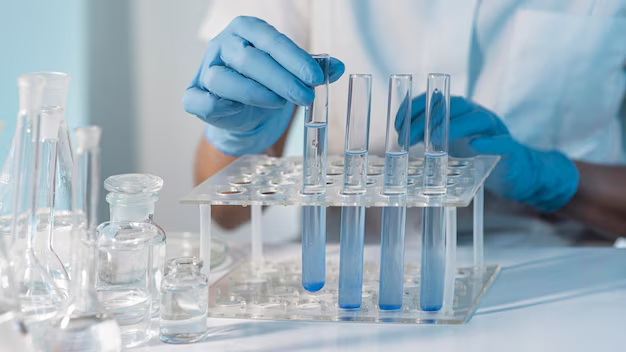
- Published in Corporate News / Blog
The International Society for Stem Cell Application Participates In IMCAS 2022 World Congress
ISSCA Presents Regenerative Medicine World Congress and Promotes CGELL Technology Training
MIAMI, FL, April 2022 – The International Society for Stem Cell Application has announced plans to become a sponsor at this year’s IMCAS 2022 World Congress. From June 3rd to June 5th, 2022, dermatologists, plastic surgeons, and aesthetic practitioners will gather in Paris for the world’s largest aging science and aesthetic learning event. The International Society for Stem Cell Application (ISSCA) will be present, providing invaluable information about its innovative GCELL technology. Regenerative Medicine Certification program for physicians training and Promoting its Regenerative Medicine World Congress to be held in Istanbul turkey late September
Cellular therapy is becoming standard practice in regenerative aesthetics due to its effectiveness and safety compared to existing treatment options Advanced technologies such as GCELL constitute a valuable therapeutic tool. Physicians specializing in dermatology, wound care, cosmetic gynecology, aesthetic medicine, hair transplants, and alopecia. Event participants will have a unique opportunity to learn about GCELL technology and ISSCA training programs
. Interested IMCAS attendees can visit the ISSCA and learn more about GCELL technology and ISSCA’s Regenerative Medicine World Congress at Booth 999 your spot, visit https://www.issca.us/world-congress/.
- Published in Press Releases
Why cellular therapies have become a standard in clinics that are betting on biological medicine
Cellular therapy is fast becoming a standard therapy in many regenerative clinics today. Many doctors are no longer questioning the safety and effectiveness of stem cell therapy. This is because various stem cell studies are already describing the benefits of stem cells for patients who are living with chronic and autoimmune health conditions.
This article will discuss why stem cell therapy has become a standard therapy in clinics, the paracrine effect of stem cells, and other reasons why doctors are adopting stem cells in their clinics.
Benefits of Stem Cell Therapy
Stem cell therapy is an important innovation in medicine because of its regenerative power in the human body. Most disease states are characterized by damaged cells, tissues, and organs, which is where stem cell therapy comes in. In stem cell therapy, stem cells are administered into the human body and replace the cells damaged by disease or health disorders.
Stem cell research has revealed two major ways of using stem cells to rebuild defective and damaged cells. One of these ways can be seen in procedures like bone marrow transplant, where stem cells are used to replace the damaged cells by engrafting, and they then differentiate into the proper cell type. Another mechanism relies on the paracrine effect of stem cells. This procedure of stem cell therapy involves using stem cells isolated from a donor to stimulate the patient’s cells to repair damaged tissues.
Additionally, unlike traditional therapy, stem cells have a wide application. Stem cell therapy is used to manage various degenerative diseases, autoimmune disorders, birth defects, and the research is still ongoing for so many other health conditions where stem cells have shown potential.
Also, there is currently a high demand for aesthetic medicine. Stem cell therapy is a proven alternative to other forms of cosmetology such as plastic surgery. Hence, dermatologists are turning to stem cell therapy to administer anti-aging procedures, skin rejuvenation, hair therapy, micro-needling, etc.
Why Cellular Therapies Have Become a Standard
The paracrine effect of stem cells is one of the most outstanding effects of stem cells. It involves using donor cells to stimulate endogenous repair by harnessing the regenerative power of the human body. It is a mechanism of tissue regeneration that has created new possibilities for managing various conditions using stem cell therapy.
The cells that trigger a paracrine response are mesenchymal cells, umbilical cord blood, umbilical cord tissue, adipose (fat) tissue, and blood cells from a donor’s bone marrow.
The Paracrine Effect of Stem Cells
The paracrine effect occurs when the donor’s cells send the damaged or defective cells signals to induce self-regeneration and repair by secreting some factors and proteins. One of the mechanisms by which this paracrine effect is initiated involves the secretion of cytokines and regulatory proteins by the damaged patient’s cells. These cytokines and proteins act as mediators to stimulate an immune response that attracts the donor cells, causing the donor cells to release proteins and factors that stimulate the patient’s cells to promote cell proliferation, increase vascularization, and blood flow to the areas that need to heal, while reducing inflammation.
Moreover, research has shown that the paracrine effect of stem cells prevents damaged and diseased cells from dying. They are also therapeutically useful in autoimmune diseases and preventing transplant rejection due to the immune suppression effect they have.
Is Stem Cell Therapy Effective?
Doctors are always looking for ways to provide the best possible treatment to their patients, and that is why many clinics are embracing stem cell therapy as a standard, due to its many advantages.
Stem cell therapy is one of the most effective and safest therapies patients can receive compared to other existing treatment options. Stem cell therapy is used in promoting patient outcomes in a lot of disease conditions that were previously poorly treated by other alternatives.
As new potentials and ways of applying stem cells are being discovered, doctors are beginning to maximize these benefits in their clinics. Some conditions that are currently treated by stem cells include autoimmune conditions, immunotherapy CAR-T cells, chronic obstructive pulmonary disease, neurodegenerative conditions, osteoarthritis, spinal cord injury, aesthetics/anti-aging, sports medicine, autism, and multiple sclerosis.
Therapeutic Uses of Stem Cells vs Traditional Medicine
Existing stem cell research has shown how the regenerative effect of stem cells is defining the future of medicine. The major advantage of stem cell therapy over conventional medication-based therapy is its safety. Stem cell therapy is aimed at treating the cause of the disease while traditional medicine targets the symptoms.
Another problem with traditional medical therapy is that it introduces another problem while trying to solve the existing one. As a doctor, you always run the risk of causing harm with each prescription because of various adverse effects that could lead to major organ damage of the kidney, liver, etc. On the other hand, patients already know this and they are actively seeking better alternatives, which is why stem cell therapy is fast becoming a standard therapy in clinics.
Moreover, doctors will always be concerned about whether their patients are taking their medications or not. The burden of drug compliance and adherence associated with traditional medical therapy is not always easy to navigate. This is why effective treatment options like stem cell therapy have become a standard therapy in clinics. It only requires the patient having a procedure that repairs and restores damaged cells and tissues in the most natural way.
If you would like to become certified in regenerative medicine using stem cells and other cellular therapy, contact us.
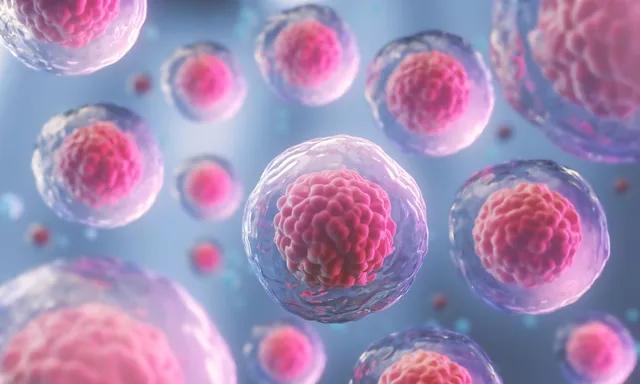
- Published in Corporate News / Blog

